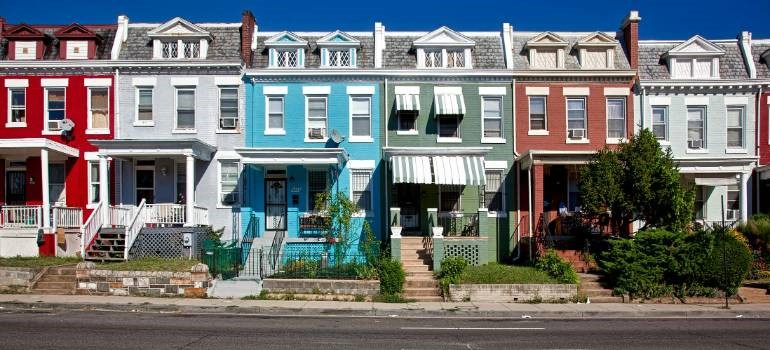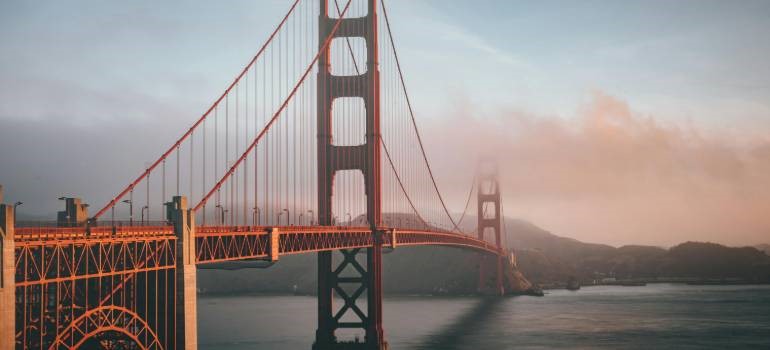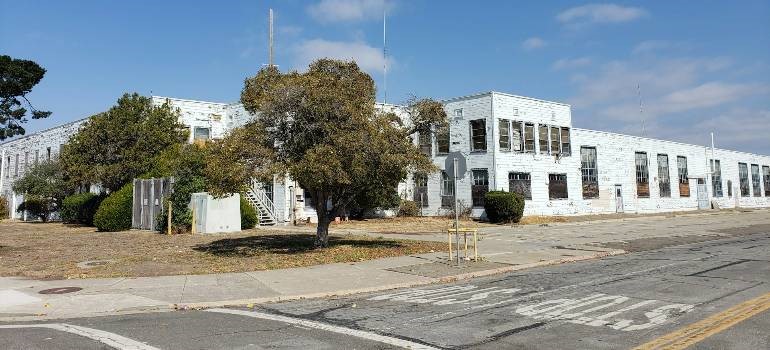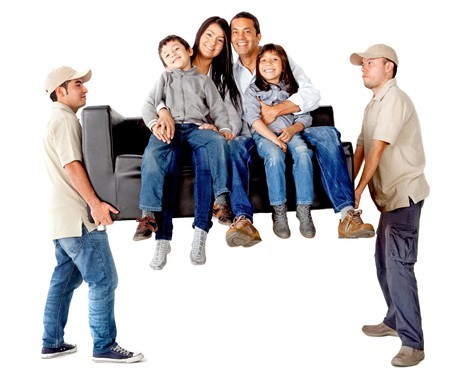Planning on moving to the Bay Area? Then you’re about to discover one of the most diverse and dynamic corners of the United States. The Bay Area covers nine counties and more than a hundred cities, each with its own flavor. Diversity is part of the DNA here. Hayward, San Jose, Richmond, Santa Clara, and Stockton rank among the most diverse cities in the nation. That variety shows up in languages you’ll hear on the street, the food on your plate, and the cultural festivals you can attend year-round. Whether you’re coming for work, education, or a fresh start, the Bay Area offers plenty. Many newcomers also start their relocation search with trusted Bay Area moving companies to make the process easier.
Technology shapes daily life
In many ways, the Bay Area feels like living slightly in the future. You’ll notice it the moment you arrive. Self-driving test cars cruise through Mountain View, delivery robots zip along sidewalks in Palo Alto, and EV chargers pop up in grocery store parking lots.
The numbers back it up. Roughly a third of households here own iPads, not even counting other tablets. Almost 20% of all zero-emission cars in the country belong to Bay Area residents. Tesla Superchargers are as common as coffee shops in some neighborhoods.

Then there are the campuses. Google’s headquarters in Mountain View, Apple Park in Cupertino, and Meta in Menlo Park aren’t just workplaces—they’re landmarks that shape local traffic, housing prices, and even where people hang out. The tech culture bleeds into daily life too. Mobile apps run everything from parking meters to your coffee order.
If you like gadgets, you’ll feel right at home. If not, expect to adapt quickly. Many professionals also rely on full service moving services when relocating to Silicon Valley hubs.
Weather shifts by neighborhood
One surprise for newcomers: the weather isn’t the same everywhere. San Francisco might be fogged in while Oakland basks in sunshine, and San Jose can feel almost like another state with its warmer, drier air.
Yes, the overall climate is mild—60 degrees much of the year—but “Karl the Fog” (yes, the fog has a local nickname) often rolls into coastal neighborhoods. Living in Daly City or Pacifica? Be ready for chilly mornings and afternoons. Move inland toward Walnut Creek or Concord and you’ll need to stock up on sunscreen instead of jackets.
This is why locals swear by layering. A hoodie in the morning, T-shirt by lunch, and maybe a jacket again in the evening. It’s normal to carry a sweater even on a sunny day. Before you pick a neighborhood, try visiting at different times of the day. You’ll see exactly how much sun—or fog—you’re signing up for. For shorter relocations, local movers in Bay Area can help you settle quickly in your chosen microclimate.
Housing costs and where to live
San Francisco tends to grab the spotlight, but it also has the highest price tag. Median home prices there often climb well above $1.5 million. One-bedroom apartments rent for $3,000–$4,000 or more.
That doesn’t mean you’re out of options. Cities like Oakland, Daly City, Fremont, and Walnut Creek give you more space for less money. Oakland’s median rent for a one-bedroom hovers closer to $1,800. Concord and Vallejo offer even lower costs, though you’ll trade affordability for a longer commute. Concord’s median home price sits around $719,000, which is a world away from San Francisco’s numbers.

Keep in mind that housing competition is fierce. Landlords expect quick applications, pay stubs, and credit reports. Rent control exists in some cities (San Francisco, Berkeley), but not everywhere. Deposits are high and move-in timelines short.
If you want a balance between cost and commute, living near BART or Caltrain stations can be worth the premium. Families often turn to bay area residential movers when upgrading from apartments to homes in these suburban communities.
Cost of living to be aware of when moving to the Bay Area
Rent may be the headline expense, but it’s not the only one. Groceries, gas, utilities, and childcare all cost more than the national average.
- Gas in 2025 sits around $5 a gallon in many cities.
- Childcare can run $1,500 or more a month per child.
- Car insurance and renter’s insurance also trend higher.
- Add bridge tolls—$7.50 or more per crossing—and monthly parking permits, and transportation can easily add hundreds of dollars to your budget.
- Eating out is another big one. A casual meal for two can run $60 or more, while fine dining prices rival New York City.
If you’re moving here, build a budget that includes more than just rent. Hidden costs add up quickly, and newcomers often underestimate them.
Getting around the Bay Area
The Bay Area is big, and getting around can feel overwhelming at first. Luckily, the transit system is wide-reaching.
- BART connects San Francisco with Oakland, Berkeley, Richmond, and parts of the Peninsula.
- Caltrain runs from San Francisco down through Palo Alto and San Jose, while Amtrak’s Capitol Corridor links the East Bay to Sacramento.
- Don’t expect late-night trains; most stop running around midnight. That’s when rideshares like Uber and Lyft step in.
- Driving? Prepare for congestion. Highways 101, I-80, and I-880 jam up daily, and bridge tolls add up fast—$7.50 on the Bay Bridge during peak times. Parking in San Francisco can run $300 a month for a single spot.
- On the plus side, ferries offer scenic commutes, and biking is big in Berkeley, Oakland, and parts of San Francisco.
- Tech shuttles also run from suburbs to company campuses. Students and young professionals often count on apartment movers in Bay Area when relocating near transit hubs.
A Clipper Card is your best friend—it works on BART, Caltrain, Muni buses, ferries, and more.

Diversity and acceptance
If you value cultural variety, you’ll feel at home here. The Bay Area is built on migration waves, from the Gold Rush era to modern tech booms. Today, it shows up in the neighborhoods.
- San Francisco’s Chinatown, one of the oldest in the U.S., buzzes with history and food.
- The Mission District reflects Latino heritage with murals and taquerias.
- Oakland’s Fruitvale neighborhood is full of Mexican bakeries, pupuserias, and lively community festivals.
- San Jose’s Little Saigon highlights Vietnamese culture, while nearby
- Japantown is one of the last remaining historic Japantowns in the country.
Wherever you land, chances are you’ll hear multiple languages in a single day and see cultural traditions woven into daily life. Relocations that involve delicate belongings often require furniture movers in Bay Area who understand how to handle specialty items.
A casual style of living
If you’re coming from New York or D.C., the first thing you’ll notice is how casual people dress here. In the tech world, the hoodie is practically a uniform. Jeans, T-shirts, and sneakers are the standard—even in many office settings.
That doesn’t mean everyone dresses down. Jobs in law, finance, and government still lean toward suits and blazers. For most workplaces, though, “business casual” means exactly that—casual. Even social settings like restaurants or events rarely require formal attire.

The vibe extends beyond clothing. Meetings are often informal, people call each other by first names, and even executives might show up to work in flip-flops.
Before you spend money upgrading your wardrobe, wait and see what’s typical in your neighborhood or office. Chances are, your closet already fits in. If you’re relocating quickly for a new job, last minute movers in Bay Area can help you get settled fast.
Each area has its own character
Locals know the Bay Area isn’t one place—it’s a patchwork of very different communities, and there are many neighborhoods for families moving to the Bay Area in 2025 to explore before deciding.
- San Francisco is urban, compact, and expensive, with neighborhoods like SoMa and Nob Hill each offering very different lifestyles.
- The East Bay (Oakland, Berkeley, Alameda) has a mix of affordability, cultural richness, and a strong arts scene.
- The South Bay, anchored by San Jose, feels more suburban but also houses major tech companies.
- The Peninsula (Palo Alto, Menlo Park, Redwood City) is wealthy, polished, and close to campuses like Stanford. Head north to Marin or Sonoma, and you’ll find greener spaces and easier access to hiking and wine country.
Even taxes vary by county, as do rules on parking and housing. Some cities require parking permits, others don’t. A five-mile move can completely change your daily experience. If you’re working remotely, look for the best locations in the Bay Area for remote workers to find communities with the right balance of cost and lifestyle.
Startups and career growth
The Bay Area’s reputation for startups isn’t hype—it’s reality. If you live anywhere near Silicon Valley, chances are your neighbor works for a startup or is building one.
Major companies like Google, Apple, and Intel set the tone, but it’s the thousands of small, scrappy startups that keep the ecosystem alive. Networking is constant. From coffee shops in Palo Alto to coworking spaces in San Francisco, you’ll meet people pitching ideas, raising capital, or switching jobs.

Accelerators like Y Combinator (Mountain View) and Plug and Play (Sunnyvale) fuel the next wave of companies. Venture capital firms cluster along Sand Hill Road in Menlo Park.
It’s not just tech. Biotech thrives in South San Francisco, climate tech is rising, and education startups spread across the region. Job hopping is common, but so are opportunities for fast growth.
Education and schools for families moving to the Bay Area
The Bay Area is highly educated, and that shows up in its schools and universities. Stanford University in Palo Alto, UC Berkeley, and UCSF are internationally known. Santa Clara University and San Jose State also play big roles in shaping the region’s talent.
For families, schools are often a deciding factor in where to live. Palo Alto, Cupertino, and Los Gatos have some of the highest-rated districts, but housing prices reflect that demand. Berkeley and San Mateo also draw families for public schools.
Keep in mind: district boundaries matter. Living on one side of a street could mean a completely different school assignment. Many families research test scores, parent reviews, and student-teacher ratios before committing to a lease or home. Charter and private schools are plentiful, but competition for spots can be tough.
Food, wine, and farmers’ markets
Food lovers rarely run out of options here. Farmers’ markets are everywhere—
- San Francisco’s Ferry Plaza Farmers Market
- Berkeley Bowl
- Palo Alto’s College Terrace
- San Jose’s Japantown markets are just a few
You’ll find seasonal produce, artisanal bread, and small-batch cheeses year-round.
Wine country is an easy drive north. Napa Valley and Sonoma are global destinations, but closer spots like Livermore Valley and Santa Cruz Mountains offer excellent vineyards too.

The restaurant scene is equally diverse. You can grab a burrito in the Mission District, Ethiopian food in Oakland’s Temescal, or Michelin-starred dining in San Francisco. Food trucks and pop-ups thrive, bringing everything from Korean fusion to vegan specialties.
Living here often means shopping organic, supporting local farmers, and trying cuisines you’ve never had before.
Outdoor and cultural activities
When you need a break from city life, nature is minutes away. Hike in Marin Headlands, bike Mount Tam, or walk among redwoods in Muir Woods. Drive south and you’ll reach Big Basin or the beaches of Santa Cruz.
Sports are a huge part of Bay Area culture too. Catch a Giants game at Oracle Park, cheer for the Warriors at Chase Center, or see the 49ers play at Levi’s Stadium in Santa Clara.
Arts and culture thrive as well.
- San Francisco has Broadway tours at the Orpheum
- the San Jose Jazz Festival draws crowds
- Oakland’s Fox Theater hosts major concerts.
- Museums like SFMOMA and the Oakland Museum of California showcase local and global art
Weekends often mean day trips—wine country to the north, Big Sur to the south, or kayaking on the Bay itself.
Local regulations for people moving to the Bay Area
Bay Area cities care a lot about environmental rules.
- Composting and recycling aren’t optional—they’re required. San Francisco, Berkeley, and many others enforce bans on single-use plastics.
- Parking can also be tricky. Many neighborhoods need permits, and street cleaning tickets add up.
- Smoking is restricted in apartments and most public spaces, including parks.
- Noise ordinances are also common.
- Every city has slightly different rules, and HOAs often add their own.
Before you sign a lease, ask about waste collection, parking permits, and neighborhood restrictions. It saves headaches later.
Safety and neighborhood change
Neighborhoods change fast here. Areas near BART or Caltrain often gentrify quickly, with prices rising year by year. That brings new restaurants and shops, but it can also mean long-time residents get pushed out. Safety depends heavily on the block, not just the city. San Francisco and Oakland have neighborhoods with higher crime, but also areas with strong community networks. Using crime maps and checking local forums helps.
Homelessness is visible in urban areas, especially downtown San Francisco. Most locals adapt by staying aware and avoiding certain blocks at night. Basic precautions—like locking doors, not leaving valuables in cars, and parking in well-lit areas—go a long way. Talk to locals before committing to a neighborhood. What feels lively to one person might feel overwhelming to another.
Make your move today!
There’s a lot waiting for you once you arrive. The Bay Area is diverse, welcoming, and full of opportunity, but also expensive, crowded, and occasionally challenging. It’s not a place you drift through—it’s one you adapt to. With preparation and an open mind, you’ll find yourself enjoying world-class food, cutting-edge technology, and natural beauty that’s hard to beat. Moving to the Bay Area can be demanding, but it’s also one of the most rewarding moves you’ll ever make.
Tags
Subscribe to Upline Moving's Blog










